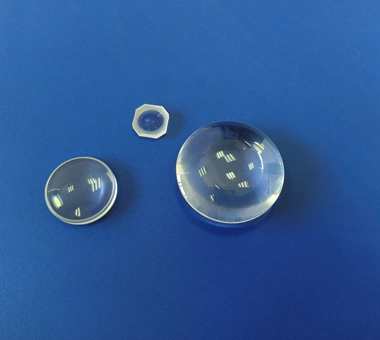
Call Us
86-755-82924037
Call Us
86-755-82924037
Infrared rays, also known as infrared radiation, encompass a range of wavelengths from 0.76 to 400 micrometers, which are invisible to the human eye. All objects above absolute zero (-273.15°C) emit infrared radiation, commonly referred to as thermal radiation in modern physics. Medical infrared rays are categorized into two types: near-infrared and far-infrared. Infrared cameras utilize low-power infrared rays, specifically near-infrared or short-wave infrared, to capture images. These cameras often incorporate specialized components such as germanium infrared lenses, infrared aspheric lenses, and infrared windows to optimize image quality.

Infrared light occupies a space in the electromagnetic spectrum between visible light and microwave energy. This range extends from red to violet. Infrared camera lenses, including those with infrared dome designs and infrared aspheric lenses, enable us to see this otherwise invisible part of the spectrum, revealing a new dimension of our world. However, infrared photography has its limitations.
Cost is a double-edged sword in infrared photography. For beginners, basic infrared lenses are relatively affordable. However, higher-quality lenses, such as germanium infrared lenses, which capture more delicate infrared light, tend to be more expensive. The primary advantage of infrared photography is its ability to capture images that are invisible to the naked eye, resulting in unique and unconventional photos. This uniqueness can also be a drawback, as it may distort subjects in ways that are not always aesthetically pleasing, especially in traditional photography settings like family or wedding photos.
Learning to capture compelling images with infrared camera lenses is a unique experience that differs from conventional photography. While installing an infrared lens is similar to attaching any other camera lens, the process of taking photos is not a “what you see is what you get” scenario. Experimentation with exposure times and lighting conditions is essential. Using an infrared camera lens filter or an infrared lens filter can further enhance the quality of your images. Additionally, components like infrared quartz tubes can be used to improve the efficiency of infrared light transmission. Embrace the journey of infrared photography, much like a newcomer to the field, and explore the creative possibilities it offers.
Bldg. A Baolong Industrial Zone #491 Dalang South Rd. Longhua District Shenzhen China
Copyright © Shenzhen Solar Valley Scitech Development Co., Ltd. All Rights Reserved.